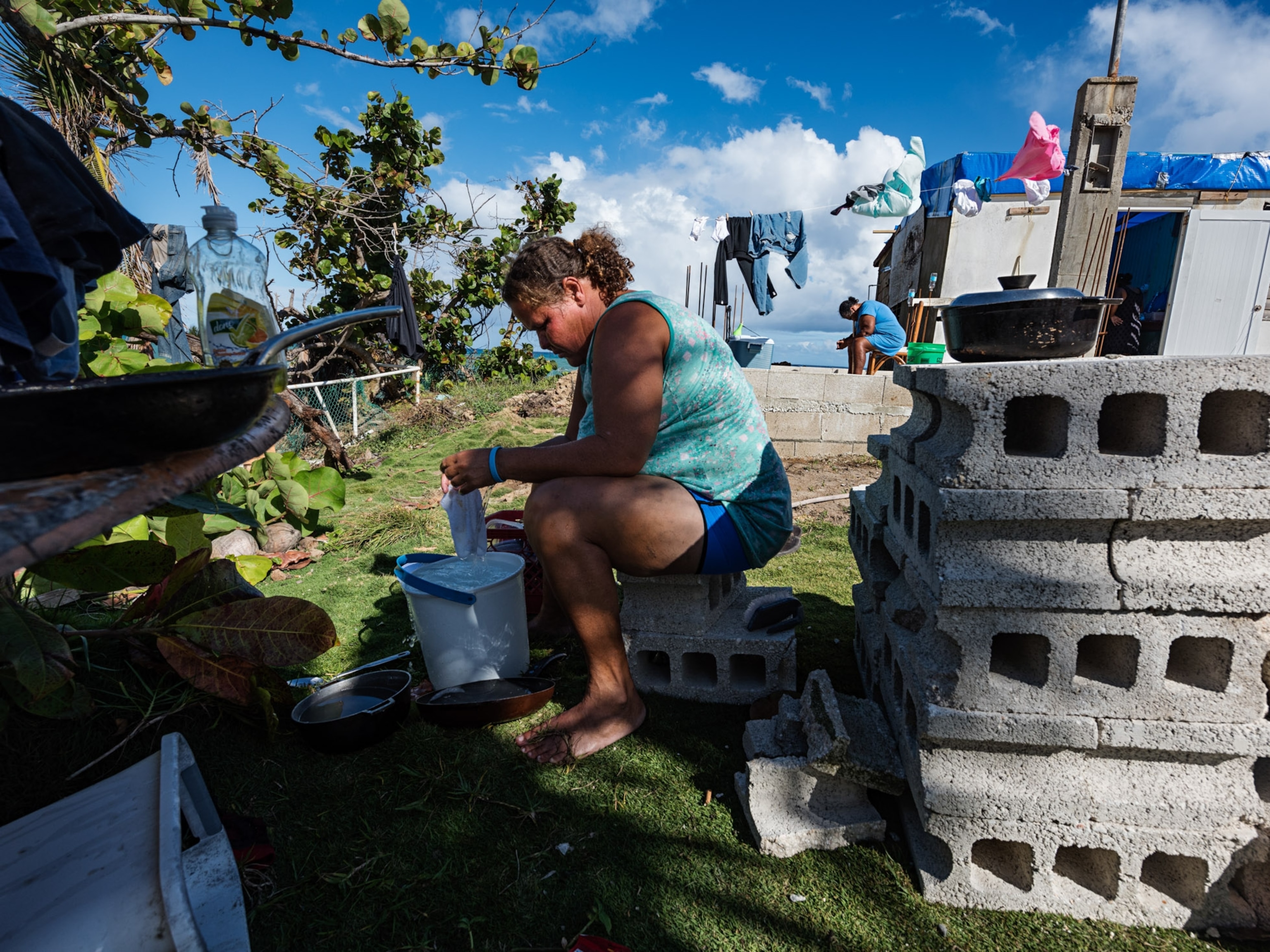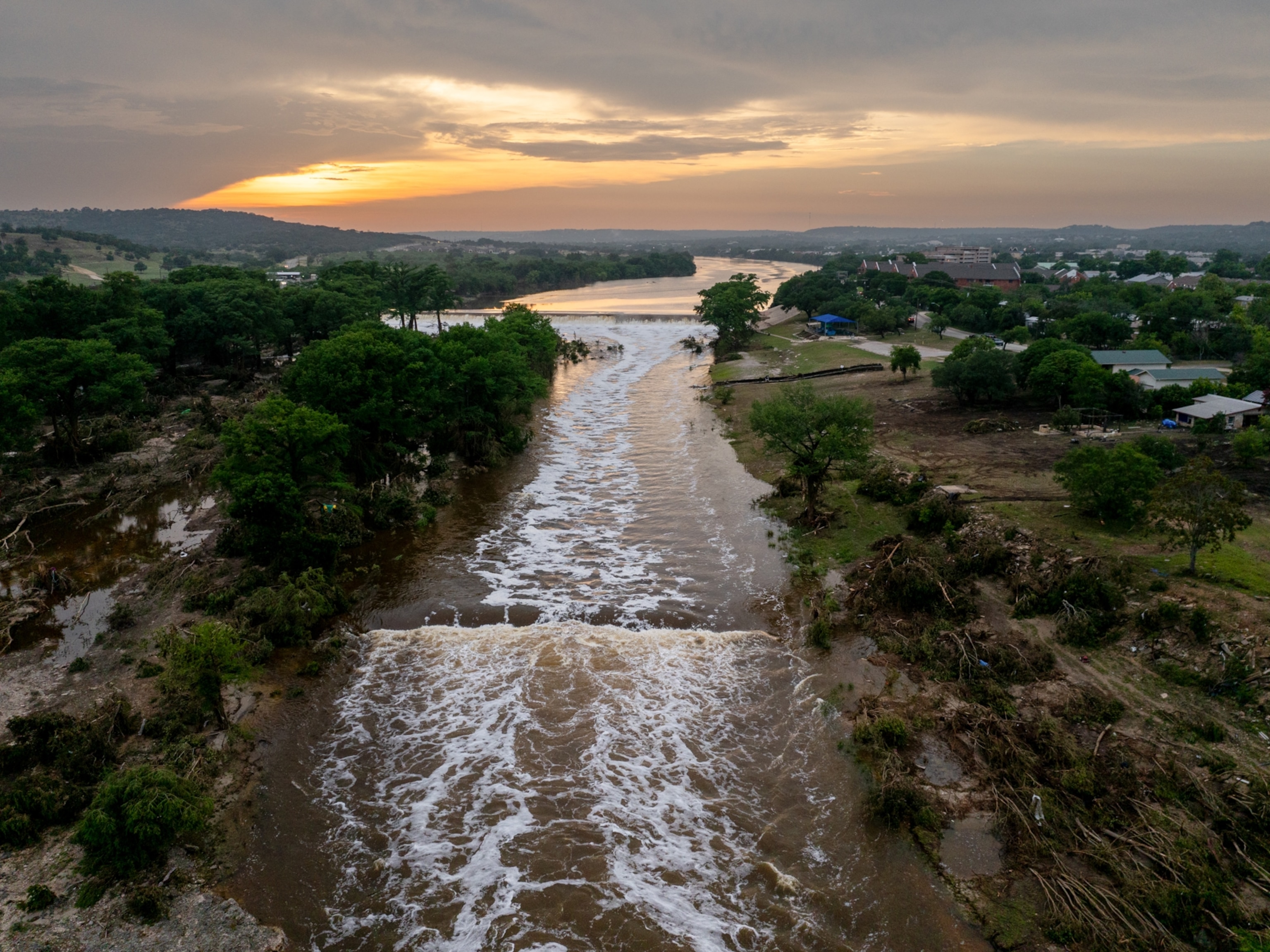Ten Years of Hurricanes and Tropical Storms in One Graphic
Hurricanes have largely avoided the U.S. coast since 2005, but there have been many serious storms and near-misses.
Scientists at the National Oceanic and Atmospheric Administration knew in June 2005 that all the ingredients were in place for a stormy summer in the Atlantic Ocean, including warm ocean water to fuel hurricanes and minimal upper-level winds to prevent or impede their development.
“The main uncertainty in this outlook is not whether the season will be above normal, but how much above normal it will be,” NOAA’s preseason forecast noted.
During an average season, 10 tropical storms form, and two or three become major hurricanes with winds exceeding 110 miles per hour (177 kilometers per hour). In 2005, there were 28 named tropical storms—so many that the National Hurricane Center ran through the 21 alphabetical names it had designated for the year and had to use the Greek alphabet to name the last seven. Four of those storms—Dennis, Katrina, Rita, and Wilma—became monster hurricanes that devastated the U.S. Gulf Coast. (See all of our coverage of the Hurricane Katrina anniversary.)
“That’s the only hurricane season that you should put in all capital letters,” said Jeff Masters, meteorological director for the website Weather Underground. “It was such an amazing event. I hope we never see anything like it in the future.” (See how hurricane forecasting has improved since 2005.)
As bad as the season of monster hurricanes was, however, it could have been much worse, because:
Officials feared that Hurricane Dennis’s eye was going into Mobile Bay, bringing the storm’s 149 mph (240 kph) winds and 9-foot (3-meter) storm surge into downtown Mobile, Alabama. Mobile officials used city buses to evacuate thousands of downtown residents, but at the last minute the eye wobbled eastward and weakened, and Dennis made landfall east of Pensacola, Florida.
A few days after Dennis, Hurricane Emily became the strongest July hurricane in history. Its winds reach 160 mph (260 kph) in the Gulf of Mexico. The storm weakened before coming ashore on Mexico’s Yucatan Peninsula. Still, Emily killed 17 and did more than $1 billion in damage.
Hurricane Maria, whose peak winds reached 115 mph (185 kph), stayed well offshore from the U.S. East Coast.
Hurricane Rita “was capable of clobbering Key West, but just missed doing so,” Masters said. Rita’s top winds eventually reached 180 mph (290 kph), but it weakened before coming ashore near the Louisiana-Texas border. Still, it killed 120 people and inflicted $12 billion in damage.
Hurricane Wilma’s top winds cranked up to a terrifying 185 mph (298 kph) as it roamed the Caribbean Sea in October. The storm weakened as it hit the Yucatan Peninsula, made a right-angle turn, regained strength and hit Key West with 120 mph (193 kph) winds and an 8-foot (2.4-meter) storm surge.
Even Europe was affected by an Atlantic hurricane when Hurricane Vince made landfall in Spain in October.
The U.S. has been lucky since that pummeling summer. No major hurricane (defined as a category 3 or above) has touched U.S. shores since then. Hurricanes have made landfall in the Caribbean, Mexico, and Central America. And storms that weren’t quite hurricanes have caused damage to those areas and the U.S.
And there have been close calls:
Two hurricanes that struck Texas—Humberto in 2007 and Ike in 2008—likely would’ve inflicted severe poundings on the Lone Star State had they stayed over water another 24 hours. Humberto didn’t quite have time to crank up before it made landfall. And while Ike was a devastating storm, it could have been far worse with another day to gather strength.
In 2011, Hurricane Irene’s winds ramped up to 120 mph (193 kph), but the storm weakened before coming ashore in North Carolina. Still, it was the seventh-most expensive hurricane in U.S. history, causing $16.5 billion in damages from North Carolina to Canada.
Hurricane Sandy morphed into “Frankenstorm” as it thundered up the East Coast a few days before Halloween 2012. Sandy devastated the Jersey Shore, knocked out power for millions, flooded New York City subways, and inflicted $65 billion in damage—second only to Katrina. Sandy would’ve been far worse had it not weakened before hitting New Jersey.
Of the nine hurricane seasons since 2005, seven have had above-average activity, and three—2010, 2011, and 2012—were among the most active on record. Since 2006, 21 major hurricanes formed, some of them extremely powerful. Yet those storms stayed at sea, made landfall in Mexico or Central America, or weakened before coming ashore in the US.
Weather Underground’s Masters has a simple but unscientific reason for the absence of major hurricanes from U.S. shores—“Luck and prayer, maybe?”
Hurricane seasons are cyclical, and scientists think the Atlantic Basin may be entering a period of less-active summers. But even if summers might not be as stormy in the near future, powerful hurricanes will occasionally form.
And sooner or later, one of them will come ashore with devastating results.
North Carolina author Willie Drye’s new book, For Sale—American Paradise, will be published October 1 by Lyons press.







